We all want to have a good, successful garden. Having a good garden takes a bit of knowledge and planning. By understanding the basics of gardening and carefully planning your garden, you can have a garden that is beautiful, productive, and a joy to spend time in. When you are having fun in the garden, you spend more time there and you end up doing the tasks that keep it looking good.

Throughout the last two decades, we have created many different gardens and have tried out a lot of gardening techniques. We have experimented with many garden styles, types of plants, and different ways to grow them. We have learned some good gardening habits that make gardening easier and more fun.
In this article, we cover some ideas to consider when planning a garden and we share ten great gardening tips to help you get the most out of your garden. If you are new to gardening or if you are just getting back into it, then you have come to the right place.
Tip #1 - Start Out With a Small Garden Space
If this will be your first garden, then start out small. You don't want to overwhelm yourself with too many plants at once. Start with a few plants and then add more as you get more experience. Some easy plants to start with are herbs, annual flowers, lettuce, and spinach.

As you figure out what you like to grow, you can add more plants to your garden. As you get more experience you will discover which plants are worth the effort and which ones you will want to skip in the future. Who knows... your salad garden may later turn into a salsa garden.
Tip #2 - Choose the Best Location for Your Garden
When you are deciding where to put your garden, think about the amount of sunlight the area gets.
Most vegetable gardens prefer a full sun location so keep this in mind if that is your goal. If a sunny location is not available, you could try planting in raised beds or containers to help warm up the soil.
No matter how much sun exposure you have available, there is a type of garden that can do well there. If you have a shady location, you could choose to make a shade garden or put in a koi pond. There are hundreds of flowers that prefer shade to part-shade. Hostas, heucheras, hellebores, ferns, and coleus are all great choices for an area with a lot of shade.
If you have several options for the location of your garden, consider the distance that the garden will be from your house. The closer the garden is to the house, the better the chance you have of being successful with gardening. You want to make it as convenient as possible to water plants and harvest vegetables.
Tip #3 - Decide on Your Garden Style
Think about how you are going to use your garden and all the different ways that you want your garden to function.
Is it going to be a small garden, near the kitchen, that you can quickly get to for herbs and vegetables while cooking?
Do you need to plan lots of space for the tomatoes that you'll be using in salsa or tomato sauce?
Are you going to be spending very much time there or will you be inviting others to spend time there with you? If so, you may need to plan in some space for a table and chairs... or a bench.
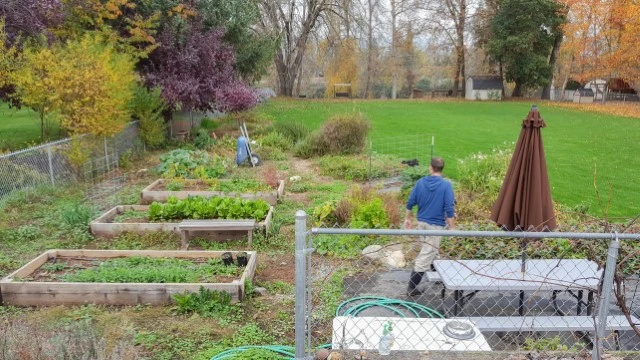
Do you want a casual or natural garden space or do you like a more formal garden? Do you want to add structure to your space with raised beds or arches?
If you can't decide on just one style, then consider making two gardens. You can have a small kitchen garden near the house and a large production garden further away. This allows you to keep your small garden looking nice while ignoring the weeds in the production garden. For more ideas about different types of gardens you might like to create, check out our garden style guide.
Tip #4 - Create the Right Soil
Soil should be well-drained, fluffy, and rich in nutrients. When first establishing a garden it is a good idea to turn the top six inches of soil with a shovel or rototiller to see what you are dealing with. This allows you to learn how compacted your soil is and how many roots you are dealing with. You may only have to do this the first couple of years, as over time, your soil will improve and you can switch to a more no-till technique.
Well-drained soil is necessary for your plants to get the water and oxygen that they need. You should make sure that your garden soil is not too dry or very wet. If you have poor drainage, like when there is a lot of clay in your soil, you can add sand or perlite. If it drains too quickly, add compost or organic matter to it.
Some soils are naturally low in nutrients. The best way to amend soil that does not have enough nutrients is by adding compost. Compost is made by putting organic matter like leaves, grass clippings, and kitchen scraps into a pile and letting it decompose. You can also buy compost from your local garden center.
Tip #5 - Choose the Right Plants
Choose plants that are easy to grow, especially when you are first starting out. You don't want to spend a lot of time and money on plants that are difficult to grow. You also don't want to choose plants that are not going to grow well in your area.
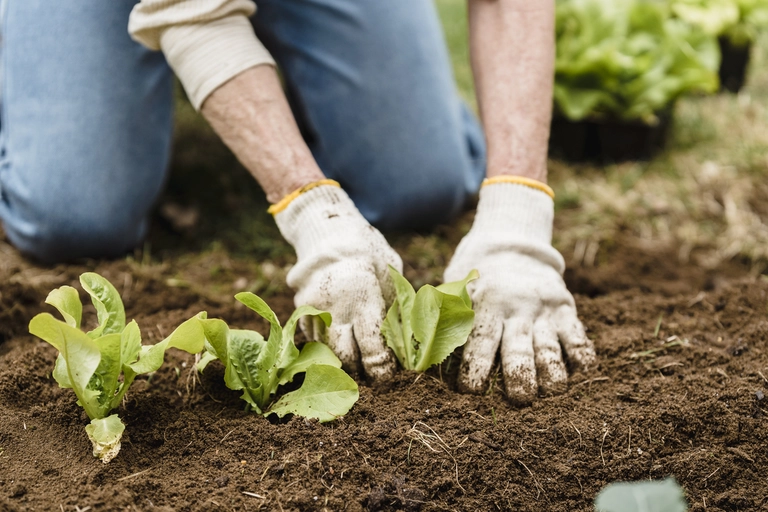
Know your climate and the average last frost date before you start planting. If you are new to gardening, make sure that you are planting well within the window of time that the plant is supposed to grow. You don't want to be planting too early or too late. More experienced gardeners like to push the envelope and use their personal tricks to get their plants to grow faster. If you are just starting out though, you should just stick to the regular planting schedule.

Many garden centers (especially the smaller ones) carry varieties of plants that are suitable for your local climate. We have found varieties of tomatoes and strawberries at our favorite garden center that have been created especially for our area.
You can also find out which plants grow well by talking to other gardeners. If you have a state college extension office near you, you can ask them for advice. Your local farmer's market is also a good place to look for other gardeners. Most gardeners are happy to share their knowledge and experience and enjoy talking about their gardens.
Tip #6 - Make a Garden Plan
Look at the different planting areas inside your garden and figure out the sun and water requirements for your plants. Decide where to put your plants and make a garden map. Certain spots will be better for some of your plants. You can avoid the hassle of having to move plants to a better spot later on by doing a little research first. You can group them based on their water needs, the amount of sun or shade that they require, and early or late-season harvest times. It is also a good idea to think about companion planting, which is when you plant certain plants together that can benefit each other in some way.
Planning your garden at the beginning of the project takes a little bit of effort, but it can really save you a lot of time later on. You can group similar plants together to make watering and harvesting easier and you can be more successful with your garden because you will know what your plants need to be able to grow well.
Sun vs shade
You can group your plants based on those that need the most sun and those that need afternoon shade. Decide where the morning sun will be the best. Some plants, like tomatoes, will need full sun all day long.
Find out which spots have afternoon shade. Plants like lettuce and spinach will need a little shade in the afternoon. You may want to think about ways to add more shade to your garden. You can add shade by building a pergola or a trellis. Some plants that grow really tall, like sunflowers, can be used to shade your plants too.
Don't forget about water needs
You should think about how much water individual plants need as you are planning your garden. You can put plants together that have the same water requirements.
Which plants need the least water? You may want to put lavender and rosemary together in the spot with the best drainage since they like to dry out between waterings.
Which plants need the most water? Melons and squash need a lot of water. You may want to put them in a spot where you can easily water them. Peas, beans, beets, lettuce, and spinach are also plants that need a lot of water.
For tomatoes, choose a spot where you have control over how much water they get, separate from the rest of the plants. That way you can cut back on watering them when it is taking too long for the tomatoes to ripen.
Make harvesting easy
You may want to group some of your plants in ways that make harvesting easy.
Think about which plants you will harvest from at different times of the year. You may want to put your winter crops in the back of the garden and your summer crops in the front.
You could try putting taller plants behind the shorter ones. That way you don't step on any plants as you are trying to harvest the ones in the back.
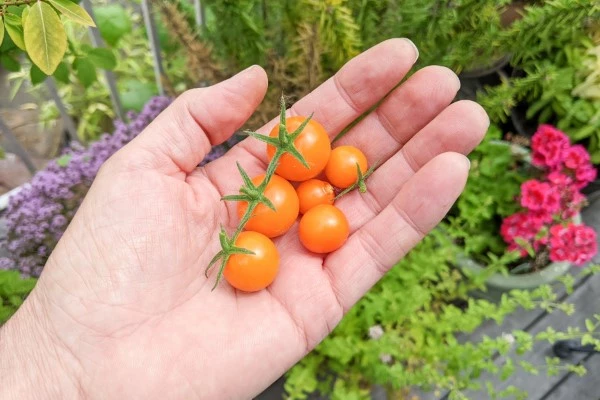
You may also want to put your plants in beds. Four-foot beds are very popular but you may find that they are a little too deep to easily harvest from. You may want to try 3-foot beds instead. There are no rules for bed size, so build whatever you think will be comfortable for you to work in.
Try companion planting
Companion plants are plants that mutually benefit each other either through nutrients and structure, or they help to fend off pests. Sometimes you can plant a sacrificial plant that will attract pests. This can help to keep pests away from the other plants that you want to protect. Aphids like to gather on broccoli or Brussels sprouts. Ants love sunflowers.
With companion planting, you can greatly affect the health of your plants. A garden can be perfectly successful without companion planting, but it can do even better with it.
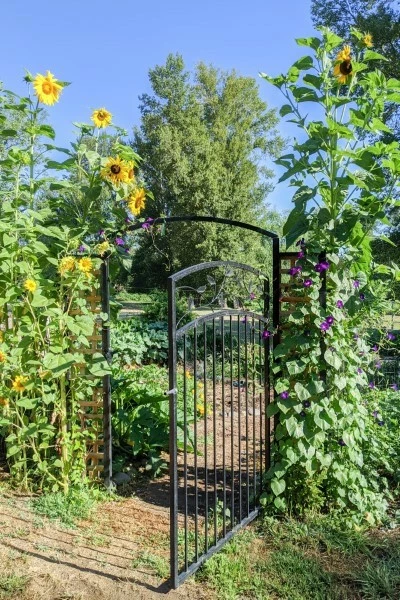
One easy way to try this out is to plant flowers around your garden. Flowers are great at attracting pollinators which you need to have in your vegetable garden to pollinate your plants.
Tip #7 - Know Planting Requirements
Each plant has its own set of planting requirements. Some like to be planted deep and others need to be planted shallow. Some plants like to be planted on a shady day. Before planting your new plants spend a little time researching each specific type of plant.
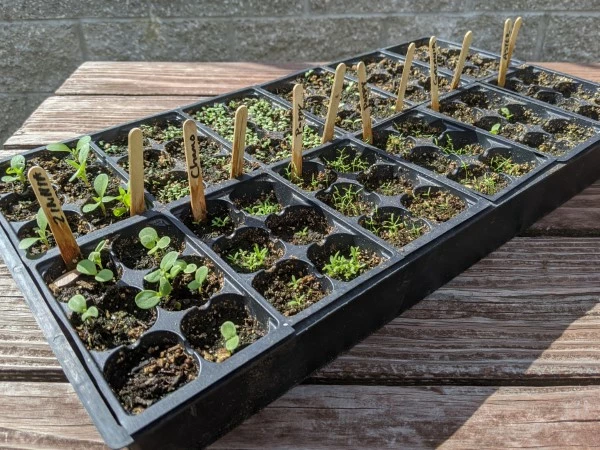
When planting seedlings, if the roots are tightly packed, it is important to lightly spread them out to help the plants get established quickly. This is because seedlings are small and do not have strong defenses against pests. The sooner they can get rooted, the sooner they can defend themselves against all the little bugs that are out to eat them.
Some plants will need a little support until they are well established. A dried stick of bamboo usually does the trick. Tomato cages and small sections of fencing can work as well. You can use twine to tie vines onto these structures so that they spread out and cover a larger area.
Tip #8 - Care for Your Plants
Understanding the basic needs that your plants have will help you to care for them. When your plants have the right amount of water, nutrients, and sunlight they will be healthy and productive. You can create a garden that is beautiful to look at and delicious to eat.
Water your plants
Give your plants the right amount of water. You don't want to over-water or under-water your plants. Make sure that you are watering your plants at the right time of day. Watering early in the morning is the most efficient time of day to water. This allows time for water to get down to the plant's roots before the sun comes out and causes the water to evaporate.
When it is very hot out, you may need to water several times throughout the day so that your plants stay strong enough to keep producing.

Over-watering is likely to cause your plants stress, so it is important to test your soil before watering. Scratch the surface with your finger and if it looks damp then your plants probably don't need water that day. If it is dry, then you should water. On really hot days plants can wilt in the heat which may or may not mean that they need water. Checking the soil like this is a great way to tell if your plants need water.
Feed your plants
More plants are probably killed by over-fertilizing than by under-fertilizing. Fertilizing is actually a deep and difficult topic which makes it easy to get wrong. Organic fertilizers are made from natural materials and are much less likely to burn your plants. They are the best choice for feeding your plants. They come in both liquid and granular forms. For indoor use, granular is preferred because it is low odor. For outdoor use, either is fine. Fish fertilizer is an excellent choice for outdoor use if you can tolerate the odor.
Learn about pests
Learn about the pests in your area that can attack your plants. By planning ahead, you may be able to prevent them from causing you problems.
In the gardening world people talk about chemical vs cultural control. It is always best to avoid spraying pesticides because these kill both pests and beneficial bugs equally. Cultural control is the practice of using plants that are resistant to pests. Sometimes you can discourage pests from visiting your garden just by planting specific plants that they do not like. This is the best way to control pests. Crop rotation, companion planting, and mulching are all ways to use cultural control.
Learn about diseases
It is always easier to prevent diseases than it is to cure them. Learn about the different ways that you can prevent diseases from harming your plants. Sometimes you can avoid problems by adding the right soil amendments. Other times you may need to spray your plants with a fungicide. Check with the plant experts at your local nursery to see if they have any recommendations for you.
Learn about weeds
Learn to recognize the most common weeds in your area. Some weeds need to be pulled out by hand, especially those that are small and growing near your plants. Weed when the soil is damp so that they are easier to pull out. If you are in a hurry, scrape the weeds off at the surface and move on. This will slow them down enough for your plants to hopefully dominate.
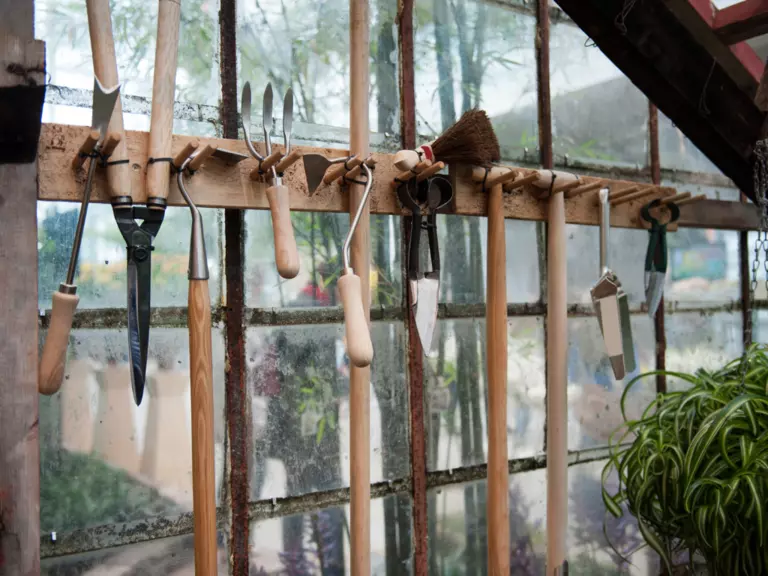
Some types of weeds may need more serious attention. A natural solution to get rid of weeds is to spray them with vinegar on a hot day. You can also use mulch to help prevent weeds from growing in your garden. Don't get discouraged with weeding. There really is no end, it is a constant of gardening. Every time you weed you are pushing the weeds back. You are always deciding how far to push those weeds back. Weeding is a battle but persistence will win the war.
Start composting
Using compost is a great way to fertilize your plants. You can also use compost to improve the composition of the soil in your garden. By adjusting the amount of greens and browns that you add to your compost pile you can get just the right balance. Think about adding bark and other chunky organic material to add more fluffiness if your soil is very dense. You can also add in some sand to help with drainage. Composting can be a great way to recycle your kitchen scraps and other organic materials.
You can create a compost pile in your garden or you can use a compost bin. A compost bin is a great way to keep your compost pile out of sight. There are many different methods of composting, so find one that you like and get started.
Tip #9 - Know When to Harvest
Learn about the different plants that you are growing and when to harvest them. Make sure that you know what the plants look like when they are ready to be harvested.
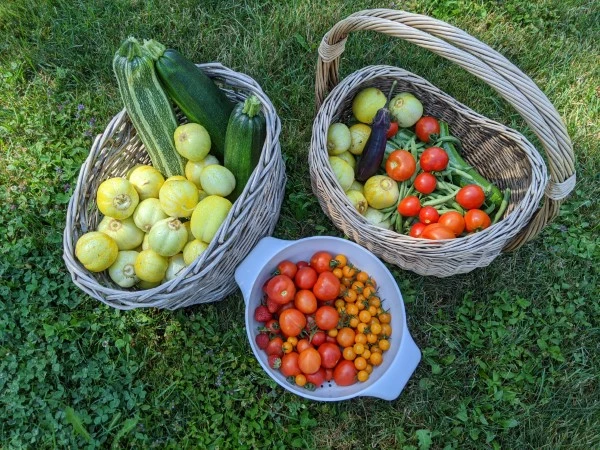
The time of day that you choose to harvest can be important. Most vegetables should be picked in the morning. Since they are crisp and cool in the morning, they will store better in the refrigerator. Lettuce should be harvested while it is still damp, from morning dew. Other vegetables, like peas, beans, squash, and melons, should be harvested after the drops of dew have evaporated.
Tip #10 - Keep a Garden Journal
Keep a journal with notes about your gardening experiences. You can record the dates for seed starting and write down how many of each type of plant to grow.
Each year in the garden is always a little different. By recording the ideas that worked well and taking notes about the things that you want to avoid doing in the future, you can make your garden better each year.
Some years you may be comparing two varieties of the same plant to see which one grows the best or which one you like better. You may be trying a plant in a new location or trying different watering techniques. You can record the results of all your experiments in your garden journal.
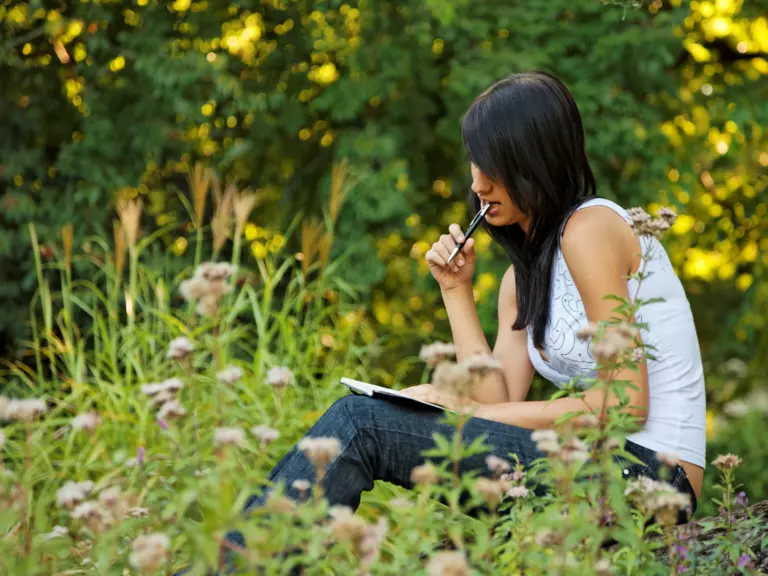
It can be helpful to make a note of the weather conditions during a growing season. Some years you may get an early spring and other years you may get a very late spring. Take notes about heavy rainfall and times when you have to deal with drought. You can record all of this in your garden journal to refer to in the future.
The Goal of Gardening
Remember that the goal of gardening should be to enjoy the time that you are spending in your garden. Always try a few new experiments each year to keep gardening interesting and fun. You will learn new things and get to try out new ideas. Changing up your routine can help you enjoy the time that you are spending in the garden.
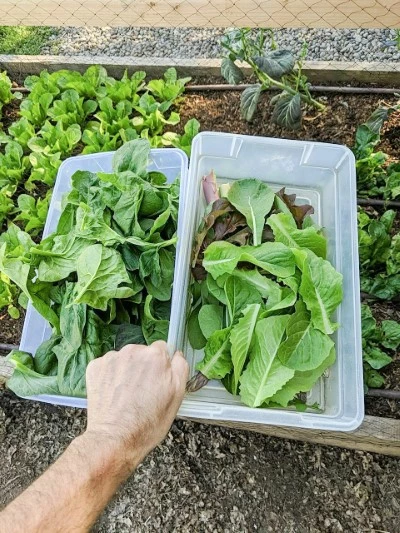
Reduce the number of things that you hate doing in the garden so that you can focus on the fun parts. If you can automate the task of watering your plants, you will be able to spend more time tending to them. Do your tasks a little at a time. By pulling a few weeds here and there you will be able to keep up with them and can avoid having the giant task of weeding the garden all at once.
Have fun with it. If you are having fun, then you are more likely to keep at it and to be successful.







